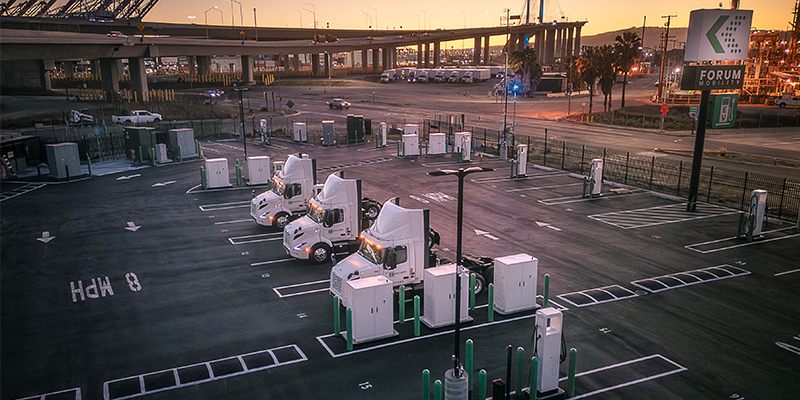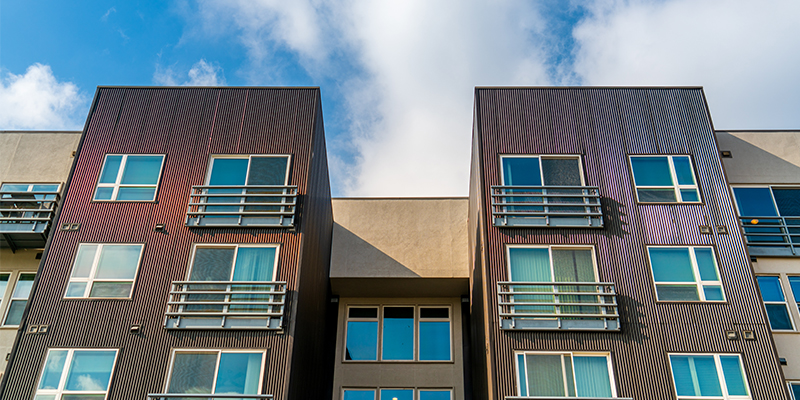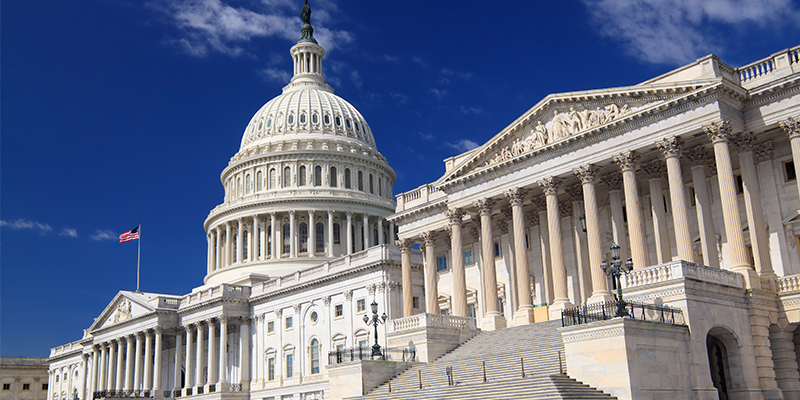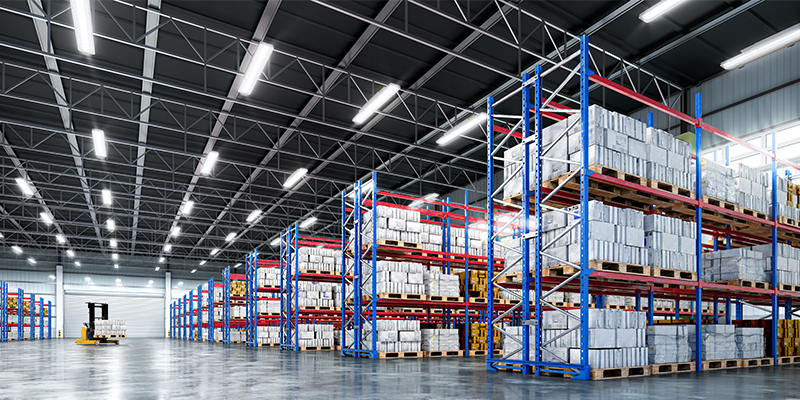By Brielle Scott
There are over 2 billion square feet of industrial real estate in the greater Southern California area, with several aspects that are unique to this dense, almost exclusively infill market. At I.CON West this week, a tour allowed attendees to explore several notable industrial projects in the market, including a newly delivered data center, state-of-the-art trailer yard and the largest port-based EV charging depot in the country.
Here, some of the key takeaways for developing, redeveloping and rehabilitating industrial space in Southern California:
- Pro-development pockets do exist in the state. “The city of Vernon is unique in that it’s kind of a bastion of industrial here in Southern California,” said Patrick Schlehuber, chief investment officer at Rexford Industrial. The city’s motto is “exclusively industrial.” With just 91 voting residents, all housing is owned by the city, and the residents pride themselves on the roughly 70 million square feet of industrial in the city limits. Attendees visited a Prime Data Center, for which the project team worked with city leadership to conduct a load study to find out how much power they could bring to the site. “Vernon gave them the green light for a significant amount of power – roughly equivalent to powering four SoFi Stadiums at once,” said Mike Norton, commercial real estate consultant at CBRE.
- Leasing and vacancy rates are no longer outliers. The current vacancy rate, depending on submarket, is hovering around 4% or 5% – healthy for most markets across the country, but that’s a 25-year high for the SoCal area. During the COVID-19 pandemic, the area saw a sub-1% vacancy rate. In the run-up after the pandemic, the pricing went as high as $2 per square foot net per month. Now, the market has settled and corrected, but it’s still a fluid market.
- At EV truck charging sites, the real cost is underground. Attendees had the chance to walk around Forum Mobility’s active EV truck charging system in Long Beach, featuring several rows of L3 superchargers. “They are working on potentially bringing in megawatt charging here, which would add another 5 to 10 megawatts depending on how many chargers brought in,” said Norton, adding, “The total project cost for this on just the underground is significant. You’re basically building underneath the ground when you do these industrial outdoor storage (IOS) sites.” Thick layers of concrete under the asphalt ensure that the surface can handle the super-heavy EV trucks.
- … But without federal funding, EV trucks are harder to pencil out. “The big hurdle that the EV Trucking Commission is really facing right now is getting the cost of the [EV] truck down,” said Norton at the site of Axiom’s EV charging facility. Federal grants had helped take the cost of these trucks down from around $500,000 to $250,000, but the Trump administration has since removed the federal funding. The lifespan of an EV truck is significantly greater than a diesel truck, and maintenance is basically limited to brakes and tires, so those costs are much cheaper. But without the federal grants, it’s tougher to pencil out when compared to diesel trucks.
- State-of-the-art trucking yards offer new efficiencies. CenterPoint’s cutting-edge trailer yard in Gardena, California, has technology built into the property that allows an entrance on the side of the property to monitor trucks. A camera system scans the truck’s license plates as they enter, and an automated system tells the driver where to park their load (a container) and where to exit.
- Sometimes nighttime is the right time. “[Shippers] are incentivized to pick up their loads [from the ports] at night to minimize the traffic on the freeways,” Schlehuber explained at the site of Rexford’s fully rehabilitated industrial warehouse on San Pedro Street. “If [shippers] want to pick [their loads] up during the day, they have to pay an additional fee, so a facility like this is very valuable for them to get that product out of the port at night, have a facility that’s open 24 hours, or at least have the yard open where they can drop the container and run back to the port and pick up another container.” At Rexford’s new Class A building nearby on South Figueroa Street, there’s another overnight feature: a night flush. It can get warm in the later summer months, and the warehouse sometimes heats up despite the insulation. A night flush pulls out all the hot air in the building at night through air filters and brings in cool nighttime air.
- Climate considerations are critical. “Stormwater is a big deal here in Southern California,” said Schlehuber. At Rexford’s redeveloped site on San Pedro Street, there are several large tanks underground in the yard to collect storm water. It’s maintained on-site and filtered before it can be ejected out to the sewer. The original facility was built in the 1980s, so Rexford also had to conduct an earthquake retrofit as part of the redevelopment. “They used to just put some light attachments between the roof and the walls, but during the Northridge earthquake [in 1994], they realized that the walls would move independently, and when they move, the roof tends to fall in,” Schlehuber explained. “So now the structure is all tied together, so when it moves, it all moves together, and the roof doesn’t fall in.”
- Looking for power? Follow the power lines. Norton encouraged attendees to get creative in their own markets. “Look at the underlying infrastructure… Find those heavy power lines and trace them to some funkier product that maybe has already secured some power,” he said. “If you have some of that infrastructure already there, it’s easier to upgrade and bring in those heavier loads and can double or even triple your property value.”
Southern California’s industrial landscape continues to evolve, blending innovation, infrastructure and sustainability to meet the demands of a dynamic market.

This post is brought to you by JLL, the social media and conference blog sponsor of NAIOP’s I.CON West 2025. Learn more about JLL at www.us.jll.com or www.jll.ca.








